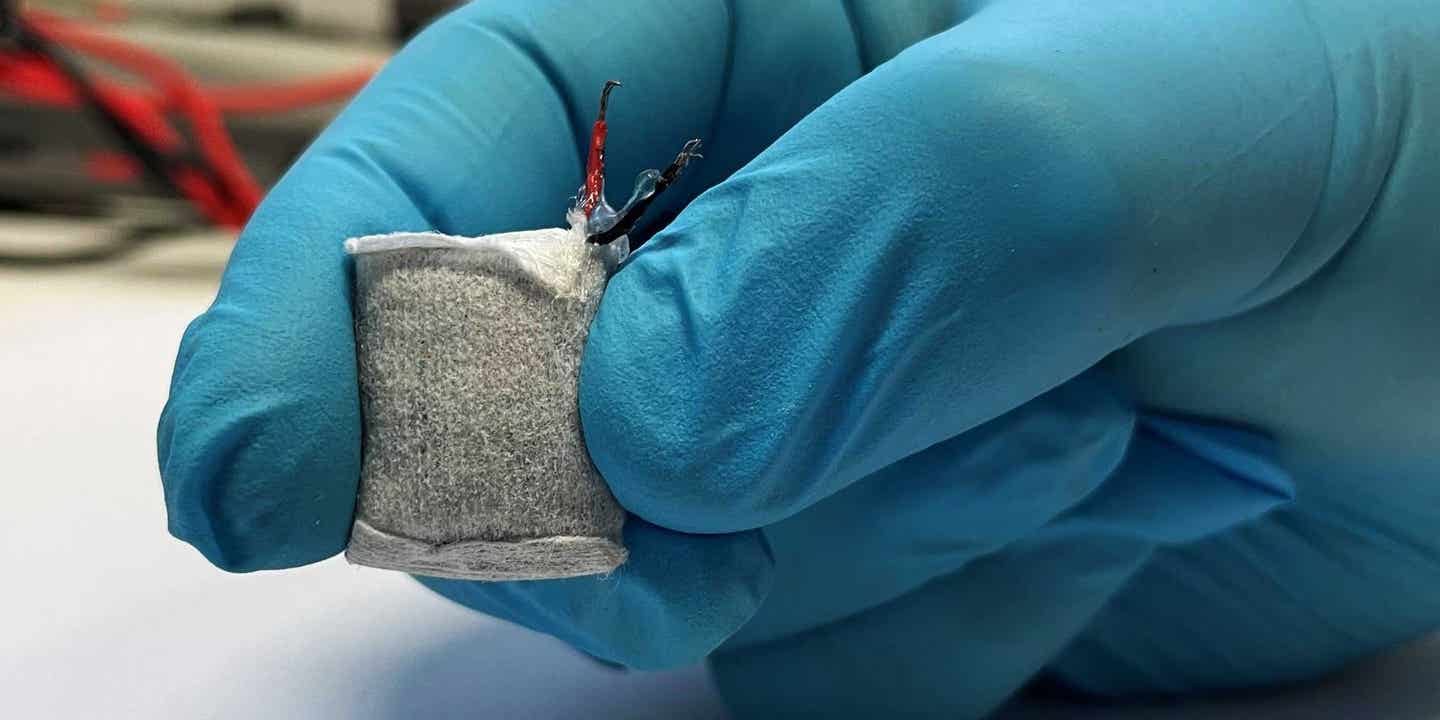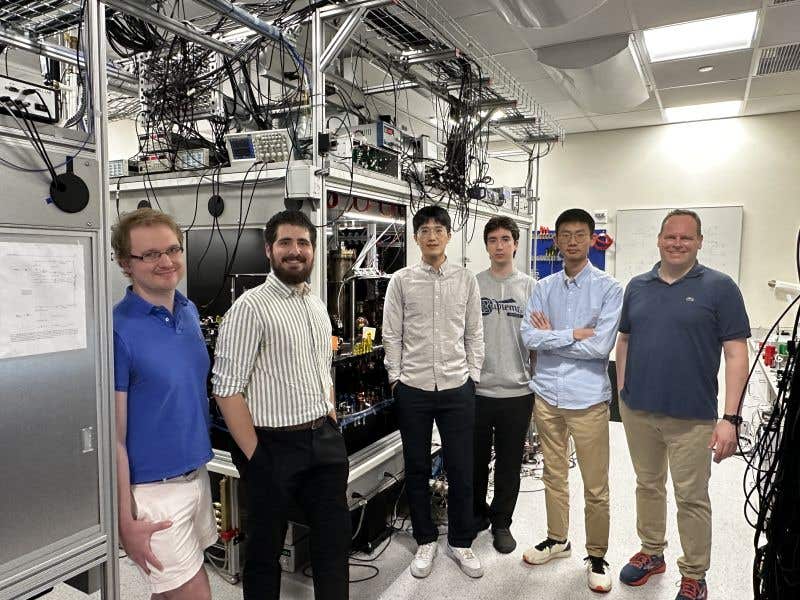Groundbreaking implant harnesses blood sugar to generate electricity and treat diabetes
A fuel cell under the skin that converts blood sugar from the body into electrical energy sounds like science fiction.

[Apr. 11, 2023: JD Shavit, The Brighter Side of News]
The prototype fuel cell is wrapped in a fleece and is slightly larger than a thumbnail. (CREDIT: Fussenegger Lab / ETH Zurich)
Researchers at the Department of Biosystems Science and Engineering at ETH Zurich in Basel have developed a novel implantable fuel cell that uses excess blood sugar (glucose) from tissue to generate electrical energy.
This innovation could pave the way for a new era of self-powered medical devices, offering a breakthrough solution for patients with type 1 diabetes and other chronic conditions that require round-the-clock monitoring and treatment.
Type 1 diabetes is a lifelong condition where the body does not produce insulin, a hormone that regulates blood sugar levels. Patients must obtain insulin externally through injections or insulin pumps. However, these medical devices require a reliable energy supply, which is typically met by power from either single-use or rechargeable batteries.
Martin Fussenegger, the lead researcher behind the project, said that "many people, especially in Western industrialized nations, consume more carbohydrates than they need in everyday life, leading to obesity, diabetes, and cardiovascular disease."
Related Stories:
This inspired his team to come up with the idea of using excess metabolic energy to produce electricity that could power biomedical devices.
The fuel cell is a breakthrough innovation that could offer a solution to this problem. At the heart of the fuel cell is an anode (electrode) made of copper-based nanoparticles that splits glucose into gluconic acid and a proton to generate electricity, which sets an electric circuit in motion. The fuel cell is wrapped in a nonwoven fabric and coated with alginate, a medical-grade algae product, making it resemble a small tea bag that can be implanted under the skin. The alginate allows glucose to pass from the tissue into the fuel cell, where it can be converted into electrical energy.
In a second step, the researchers coupled the fuel cell with a capsule containing artificial beta cells. These cells can be stimulated to produce and secrete insulin using electric current or blue LED light. This system combines sustained power generation and controlled insulin delivery.
Schematic of the non-enzymatic metabolic fuel cell for closed-loop control of blood-glucose homeostasis. Operation of the metabolic fuel cell. After implantation, the metabolic fuel cell connects to the bloodstream. (CREDIT: Advanced Materials)
When the fuel cell registers excess glucose, it starts to generate power. This electrical energy is then used to stimulate the cells to produce and release insulin into the blood. As a result, blood sugar levels fall to a normal level. Once it falls below a certain threshold value, the production of electricity and insulin stops.
The electrical energy provided by the fuel cell is sufficient not only to stimulate the designer cells but also to enable the implanted system to communicate with external devices such as a smartphone. This allows potential users to adjust the system via a corresponding app. A doctor could also access it remotely and make adjustments.
Scheme of energy generation and insulin control: when the blood glucose level rises, the circuit is activated and insulin production is stimulated with the generated energy. (CREDIT: Maity D, et al, ETH Zurich)
Fussenegger said that "the new system autonomously regulates insulin and blood glucose levels and could be used to treat diabetes in the future." This breakthrough could offer a solution to patients who currently have to rely on multiple daily insulin injections or insulin pumps, allowing for greater freedom and flexibility.
However, the existing system is only a prototype. While the researchers have successfully tested it in mice, they are unable to develop it into a marketable product due to the financial and human resources required. Bringing such a device to market would require an industry partner with the appropriate resources and know-how.
Metabolic fuel-cell-powered electrical field-stimulated vesicular insulin release by engineered human Electroβ cells. Schematic representation of metabolic fuel cell (MFC)-powered insulin secretion by Electroβ cells. (CREDIT: Advanced Materials)
Despite this, the implications of this breakthrough cannot be understated. The development of an implantable fuel cell that can generate power from excess glucose in the body could lead to a new era of self-powered medical devices that could benefit millions of people worldwide.
This innovation could offer a breakthrough solution for patients with type 1 diabetes and other chronic conditions that require round-the-clock monitoring and treatment. The future of medical technology is looking bright.
Blood-Glucose-Powered Metabolic Fuel Cell for Self-Sufficient Bioelectronics. Advanced Materials. https://doi.org/10.1002/adma.202300890
Note: Materials provided above by The Brighter Side of News. Content may be edited for style and length.
Like these kind of feel good stories? Get the Brighter Side of News' newsletter.



